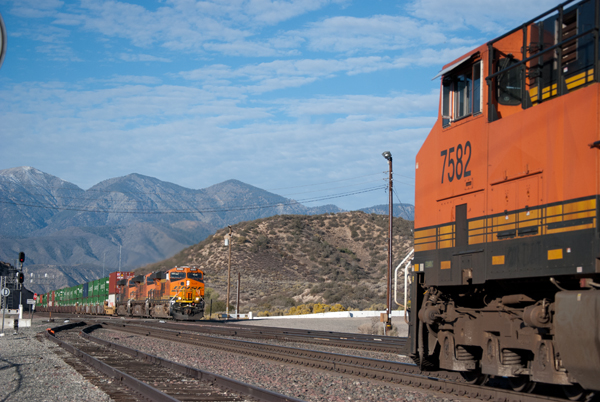
An eastbound BNSF Railway train passes a stopped BNSF freight at “Summit” in California’s Cajon Pass in 2013 — this meet is one of several conditions which might require a locomotive bell to be sounded. Trains staff Q: What are the rules concerning when a train should ring its bell at a crossing or elsewhere? […]
Read More…
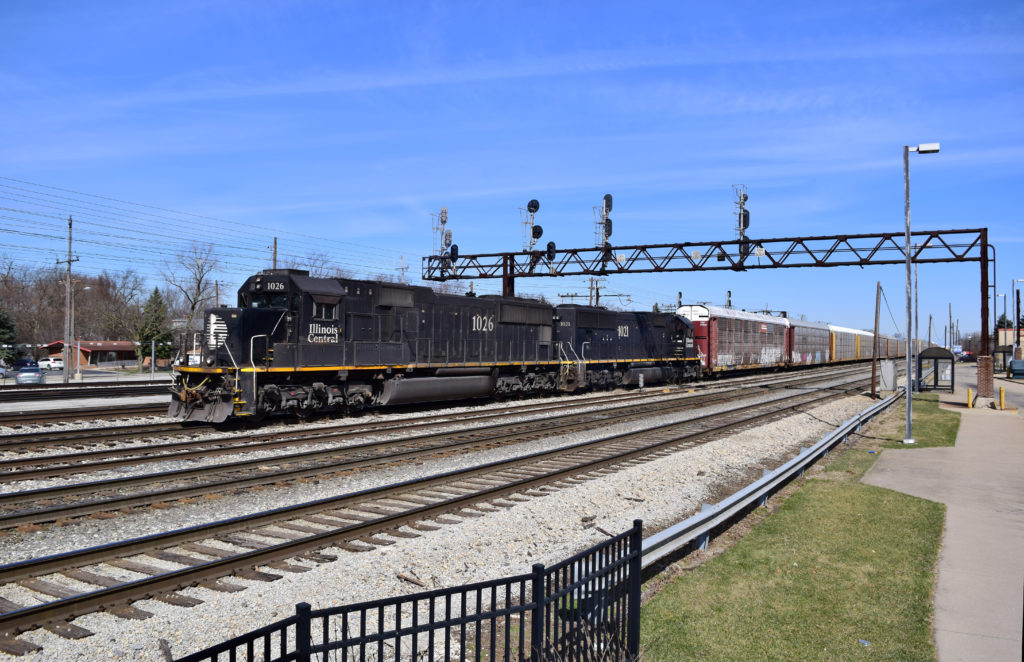
A Canadian National train with Illinois Central-painted locomotives departs Chicago’s Markham Yard in 2017. TEH-17089-16 Jacob Metzger Q: When I was in the second grade, we took a field trip to what was then the largest freight yard in the country. That was over 50 years ago, when I lived in a Chicago suburb. I […]
Read More…

A portion of the cameras and sensors aimed at freight trains to detect freight car problems at the Transportation Technology Center near Pueblo, Colo. These sensors help comprise the most modern methods of freight car inspection. Trains staff Q: How do railroads determine which freight cars need repair before continuing their journeys? — Robert Rose, […]
Read More…

A photo of a big boxy freight load, likely a wind turbine nacelle. Submitted by Mark Faust Q: Saw a whole CSX Transportation train of these in Sullivan, Ind. What are they? — Mark Faust, Carmel, Ind. A: The photo you submitted resembles a wind turbine gearbox nacelle, and is probably what the train was […]
Read More…

A Series 6 Talgo trainset is examined after 125-mph operation at the Transportation Test Center in Pueblo, Colo., in 1998. Bob Johnston Q: In the Sept. 2019 Passenger column on Page 18, I see that a Series 6 Talgo locomotive is leaning while being inspected. Was that tilt normal? — Robert Muckey, Williamson, N.Y. A: […]
Read More…
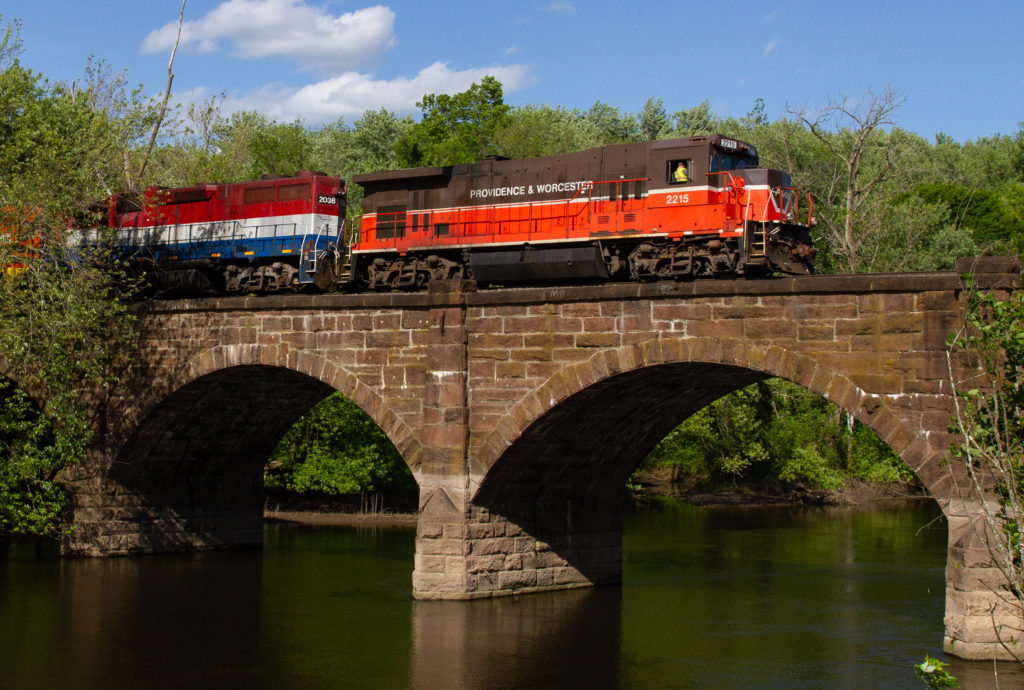
Providence & Worcester GE “Super 7” B23-7R No. 2215 leads Connecticut Southern train CSO-4 on Amtrak rails at Windsor, Conn., June 3, 2019. Scott A. Hartley Q: What were the Providence & Worcester Railroad’s colors in 2000? — Chris Carlson, Ottawa, Ont. A: In 2015, the year before Providence & Worcester was purchased by Genesee […]
Read More…
Q: I recently visited the Foster Townsend facility by the river in St. Louis and was informed that it is now part of Metro East Industries. Can you confirm? — John Foster, Gloucester, England A: Upon checking with railfans familiar with St. Louis, they confirmed that the shops you visited are leased out to Metro […]
Read More…
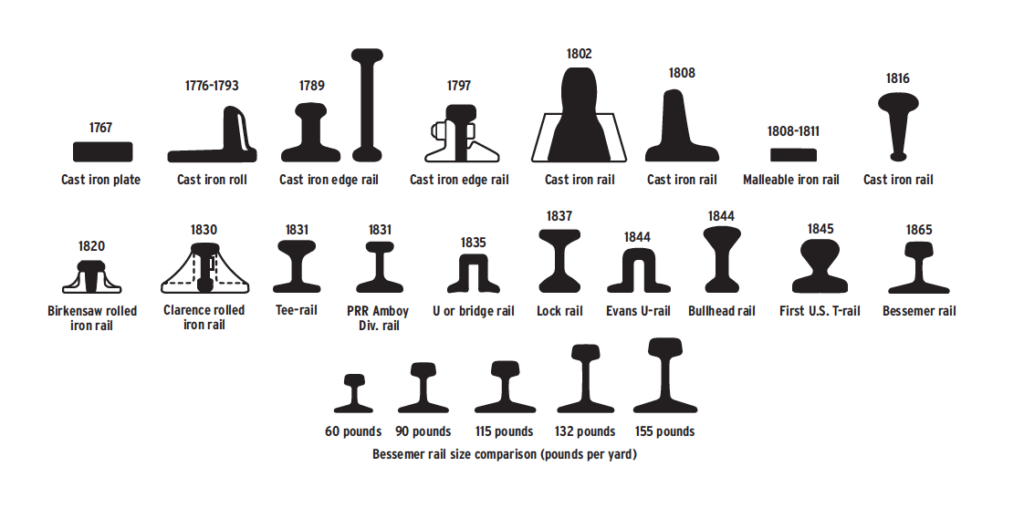
Rail profiles through time from file: TRN-TC0513 Illustration: Rick Johnson Q: Why and when did rails get their profile? — Rozier Smith A: The basic shape, or profile, of rails that we see today: chucky head, thin web, and wide base, has its roots railroading as early as 1789, according to an illustration Trains printed […]
Read More…
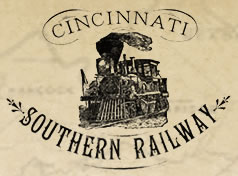
Cincinnati Southern Railway website Q: The city of Cincinnati owns the CNO&TP line running from Cincinnati to Chattanooga, Tenn., which Norfolk Southern leases from the city. Does the city of Cincinnati also own and lease yards along the line to NS, or does NS own these yards outright? — Doug Lathrem, Bowling Green, Ky. A: […]
Read More…

Conrail C36-7 No. 6628 works an eastbound train in New York’s Southern Tier east of Lanesboro, Pa., near the Pennsylvania-New York border in 1985. This section of track has a grade, what percentage that shows up on a track chart is determined by how precise the charts are. TEH-11062-18 Michael S. Murray Q: Some […]
Read More…
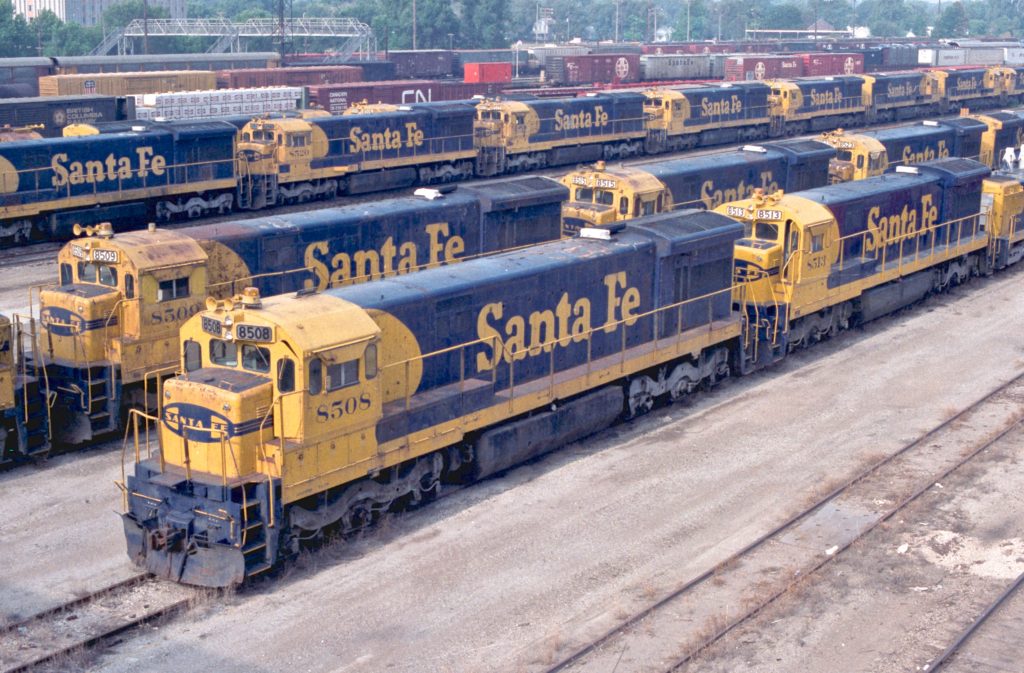
Various Santa Fe SF30C units are seen in storage at Argentine Yard, in Argentine, Kan., in 1983. Several of these locomotives have rotary or flashing beacons on their cab roofs for safety. TEH-14212-34 Ivan Abrams Q: Why did some railroads use flashing or rotary beacons atop their diesels? And do any railroads use them anymore? […]
Read More…
EDITOR’S NOTE: Trains readers aren’t the only ones to wonder about happenings in the railroad world. Trains editors and friends recently shared an email discussion about why two Class I railroads near Trains’ headquarters removed a connection at a diamond crossover. Here’s a condensed, edited version of the best explanation we’ve seen: A: I would […]
Read More…










